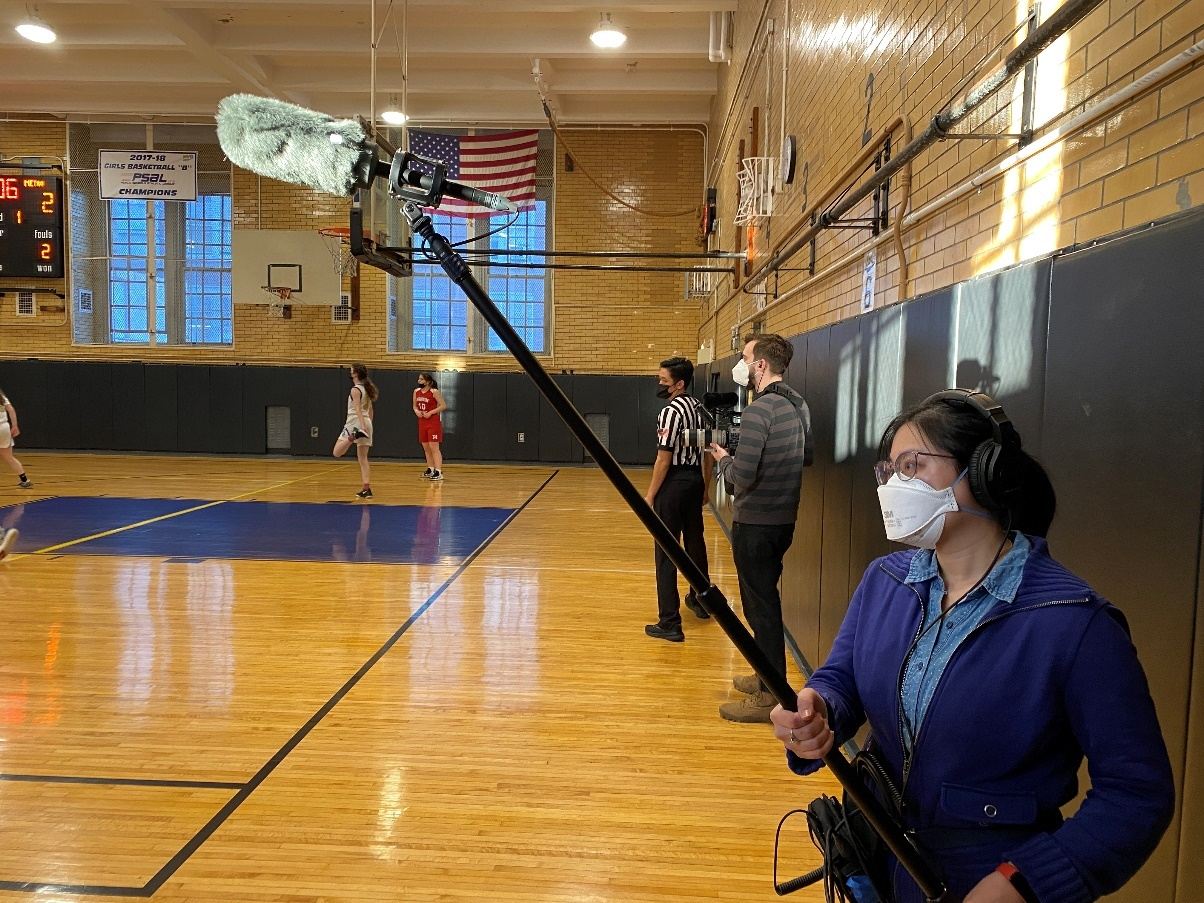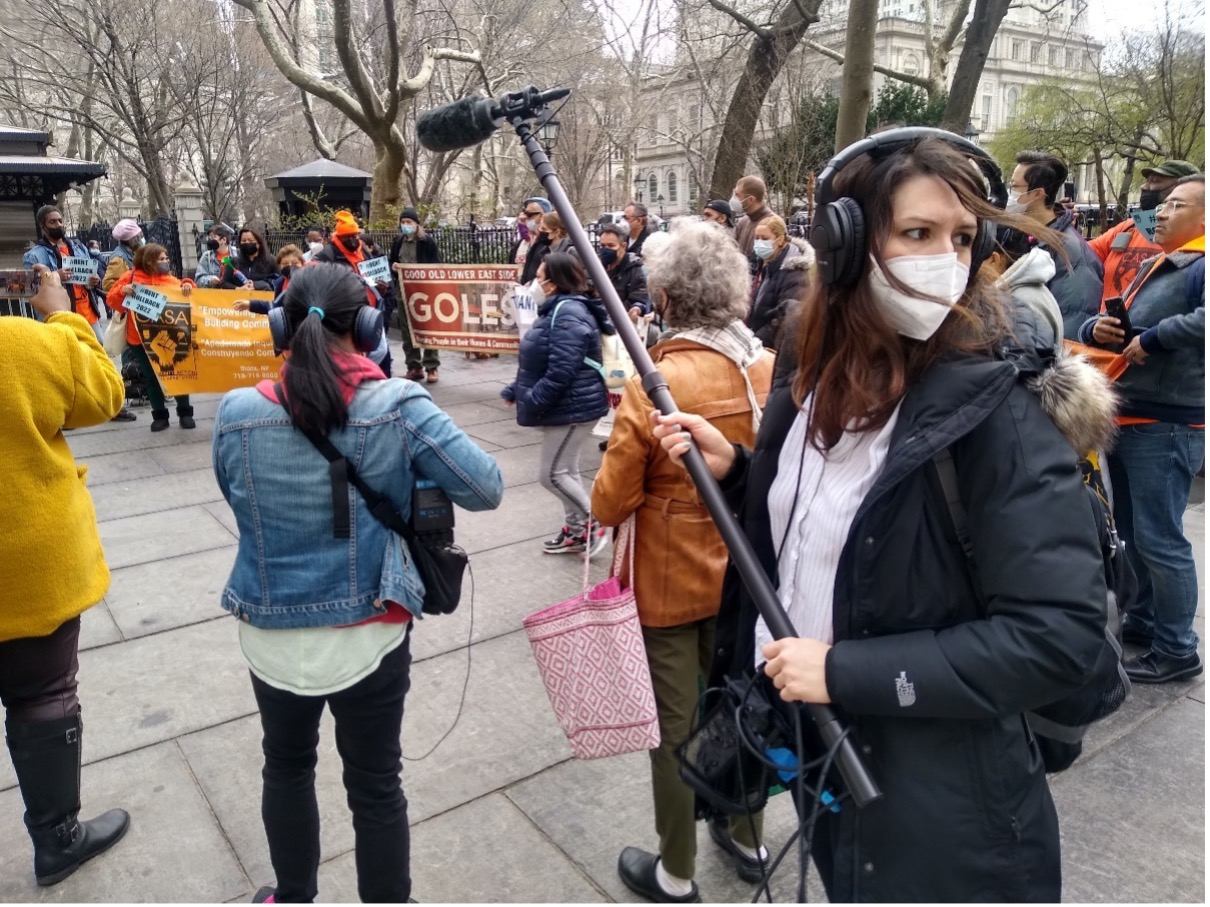Award-Winning Documentary Slumlord Millionaire Exposes Housing Injustice in New York City, with Audio Captured Using Sennheiser Microphones
June 5, 2025

Powered by Sennheiser audio, this important documentary made its world premiere at DOC NYC in November 2024, and will officially open in theaters June 6 –12th at Firehouse, DCTV’s Cinema for Documentary Film, ahead of its streaming launch on PBS this summer.
Brooklyn, New York, February 25, 2025 — The filmmakers behind Slumlord Millionaire, an independent feature documentary that will premiere on PBS later this year, were determined to accurately convey the sounds of New York City as they explored the issues of housing justice and the impact of rapid urban gentrification on tenants. To that end, co-directors and co-producers Steph Ching and Ellen Martinez relied on Sennheiser for the audio tools that would allow them and their interview subjects, some of whom turned the camera on themselves, to capture the authentic atmosphere of the multicultural neighborhoods where they filmed.
Capturing the Soundscape of the Five Boroughs
“New York is such a beautiful soundscape,” says Ching, who captured production audio on the project along with Martinez and Antonio Cisneros. “The beginning of the film starts with sound over black, and that was very intentional. We wanted to bring viewers into the experience of being in New York City and highlight the people who live in these neighborhoods. We wanted it to feel like you're walking in Chinatown, hearing the vendors talking or people playing chess, so we used that throughout the storytelling.”
"We wanted to have the best gear and be able to capture the best quality sound and we're so grateful that [Sennheiser] came into the project,” Martinez says. The Slumlord Millionaire crew connected with Sennheiser before going into production. She shares that she and Ching were primarily responsible for recording all the sound, while balancing all other aspects of the film. As a small crew, it was imperative that their equipment was light, reliable and plug-and-play. “I was pregnant during production, but the equipment that they gave us was easy to use, mobile and portable, which was crucial. It was just perfect for us.”
Martinez and Ching had a variety of Sennheiser lavalier, on-camera and boom microphones available to use individually or in combination. Their equipment included two AVX-MKE 2 Lav Sets, each consisting of a bodypack transmitter, MKE 2 lavalier microphone and plug-on receiver. They also leveraged the MKE 600 shotgun microphone, and the low profile MKE 400 for on-the-go capture. This range of microphones was not only portable but also dependable in diverse situations and locales. Ching shares, “We filmed in a lot of different types of locations, but we didn't have any issues in terms of sound capture.” Monitoring was via a pair of HD 280 PRO closed, around-the-ear headphones.
Two AVX-MKE 2 Lav Sets were used for interviews and to capture conversation in large gatherings. As the pair discovered, the AVX bodypack transmitter was very economical. “The battery life was great. There would be times where we'd mic one of our participants, then we wouldn't see them until the end of the day — and the mic was still working,” Ching recalls.

Dynamic Audio for Unpredictable Situations
A documentary is unscripted, and people aren’t speaking for a performance, Ching points out. “The lavs were kind of amazing and really changed the game for us. Especially during rallies or group meetings, we couldn't mic everyone. Maybe I would be close with the camera, but Ellen couldn’t get close with the boom because it was a wide shot. But the Sennheiser lavs picked up everything. So strategically miking certain people and getting their personal conversation moments really helped tell the story.”
The boom supported an MKE 600 shotgun microphone, outfitted with either an MZH 600 furry or MZW 600 foam windshield as needed. Ching shares that the MKE 400 was almost always on the camera for a scratch track, as backup audio capture – however, this came in handy often. “A lot of times we did fall back on that, because it was closer to a particular person speaking who may not have been miked, or the boom was not directly on them.”
She also comments, “We filmed at a lot of protests and rallies where people were having a lot of conversations and having that experience of jumping into a community moment was important to us. Even when it was just me and the camera, that on-board MKE 400 mic was super. It was so much better than using the camera mic and allowed us to be more mobile than we probably would have been otherwise.”

Audio Vérité to Tell a True Story
Ching and Martinez are quick to acknowledge Harbor’s sound and editorial mix services for ensuring intelligible dialogue throughout the documentary. The co-directors worked with the Re-Recording Mixer and Supervising Sound Editor, Kevin Peters, and Dialogue Editor, Ben Soiefer, as well as the team at Harbor in Manhattan. “They did an amazing job,” Martinez says. “We've worked with Kevin a few times before on other films. He really helped the dialogue shine through in the mix.”
Martinez explains the importance of using raw audio to convey the reality of life in the city, and how this became a storytelling device throughout the film, bringing to life the real-life risks of rapid gentrification and its impact on families and culture. “Even for the B-roll, you hear the different languages, music, different types of traffic noise and street sounds in the background. There are a few instances where we're inside doing an interview, or just doing verité with a family, and you hear distinct noises from the street, because that's just how it is in New York City. That is something that we intentionally incorporated throughout, to remind people that this is what is at risk of being lost.”
“I live in Brooklyn and am constantly hearing construction all day long,” Ching says, “So I also wanted that very aggressive, annoying experience to come through too, because I feel like a lot of people grapple with that. We were trying to help paint this visceral experience of construction as a form of harassment, of changing neighborhoods and displacing people.” While the Sennheiser mics captured the abrasive background noise, the team was supported by Ryan Billia as SFX Editor for Slumlord Millionaire.
A portrait of the people impacted by the rapid gentrification of certain New York City neighborhoods, Slumlord Millionaire shines a spotlight on the residents, activists and nonprofit attorneys fighting for the fundamental right to retain their homes against corrupt landlords and developers who prioritize profits above all. The PBS series VOCES has acquired U.S. broadcast and streaming rights to the documentary, which won the Audience Award at DOC NYC in November 2024. It is scheduled to open in theaters on June 6 - 12th before the VOCES streaming and broadcast launch on PBS in summer 2025. For more information visit www.slumlordmillionairefilm.com.

Daniella Kohan
Communications Manager - Americas & ANZ, Sennheiser Electronic Corporation



